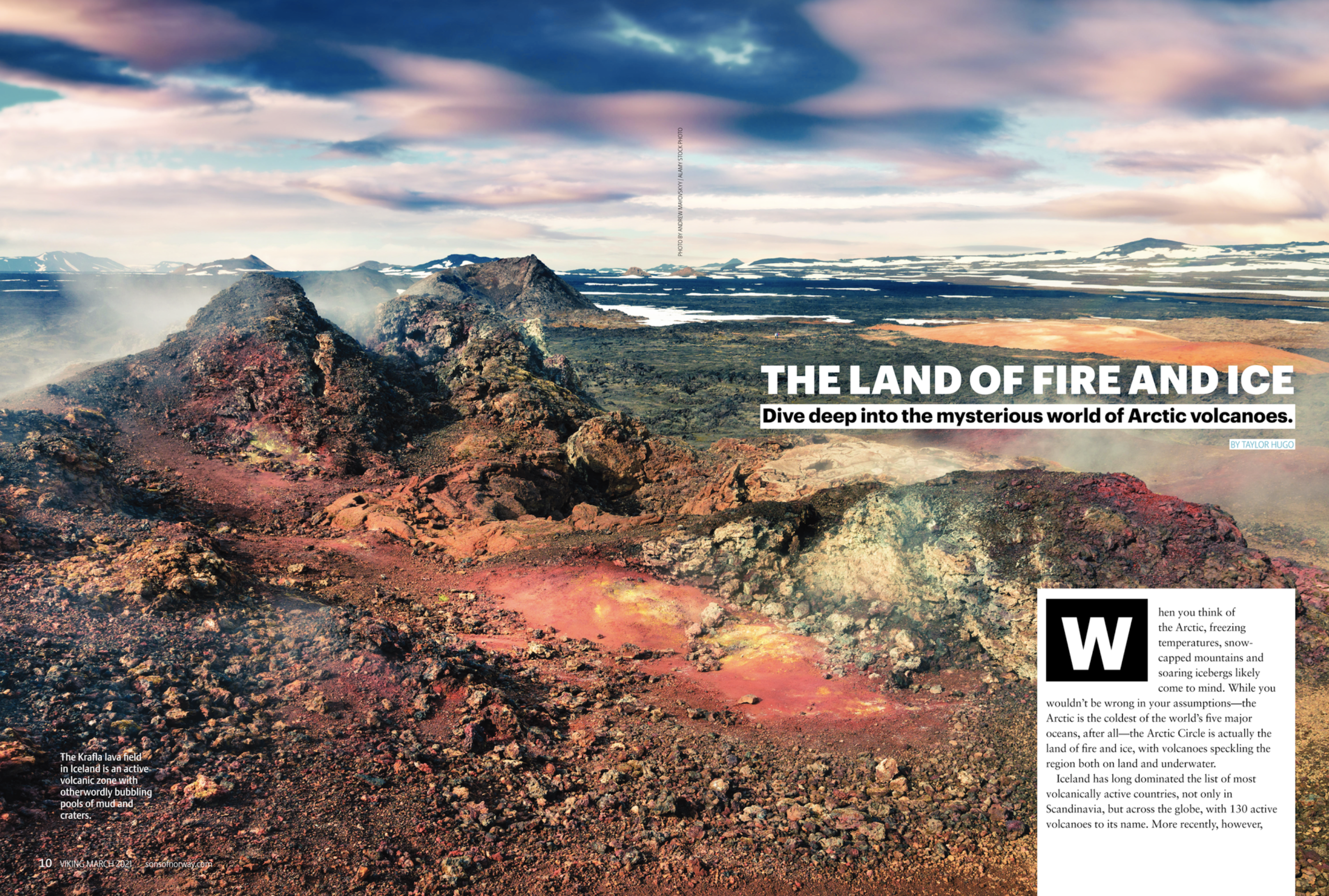 Did you know that the Arctic region is home to volcanoes? Iceland is actually one of the most volcanically active places in the world thanks to its location on the Mid-Atlantic Ridge where the Eurasian and North American tectonic plates meet.
Did you know that the Arctic region is home to volcanoes? Iceland is actually one of the most volcanically active places in the world thanks to its location on the Mid-Atlantic Ridge where the Eurasian and North American tectonic plates meet.
Whereas Norway’s volcanic activity happens underwater, many of Iceland’s 130 volcanoes are above sea-level and accessible to the public. In the March issue of Viking magazine, we dive into the mysterious world of Arctic volcanoes. If you’re looking for an adventure, check out these three popular volcanoes in Iceland.
Thrihnjukagigur
Located in southwest Iceland, this volcano hasn’t erupted in more than 4,000 years. It’s the only volcano in the world where visitors can take an elevator into the magma chamber. The tour begins by walking 40-50 minutes to the crater. Then, you’ll descend 400 feet into the crater in an open cable lift and explore for about 40 minutes. The craggy walls are a sight to be seen. They gleam with a pearlescent rainbow of colors.
Krafla
The Krafla volcanic system sits on a fissure zone in North Iceland near Lake Mývatn. Krafla volcano is a type of collapsed volcano, known as a caldera. It looks like a crater and is 1.2 miles deep. It’s one of Iceland’s most remarkable and active volcanoes. The area teems with lava flows, fissures and gullies. The lava fields are still warm from the “Krafla Fires” in the 1970s and 1980s. While you’re in the area, check out the geothermal waters at the Mývatn Nature Baths.
Eyjafjallajökull
This towering stratovolcano sits on Iceland’s south coast. Its conical shape is built by many layers of hardened lava, pumice and volcanic ash. The volcano is completely covered by an ice cap. Visitors can take a snowmobile ride up to the top to see the crater that’s 2.5 miles in diameter. After being dormant for 180 years, the volcano’s last eruption was in 2010.
